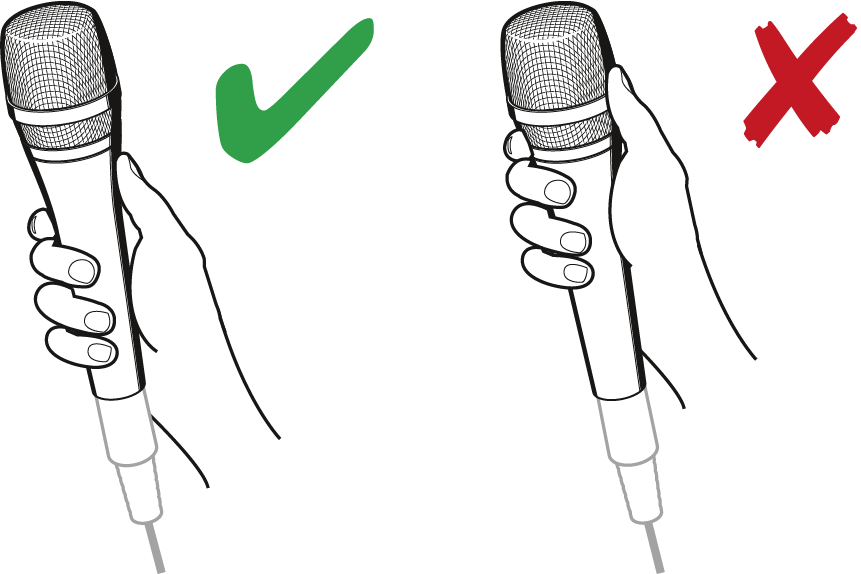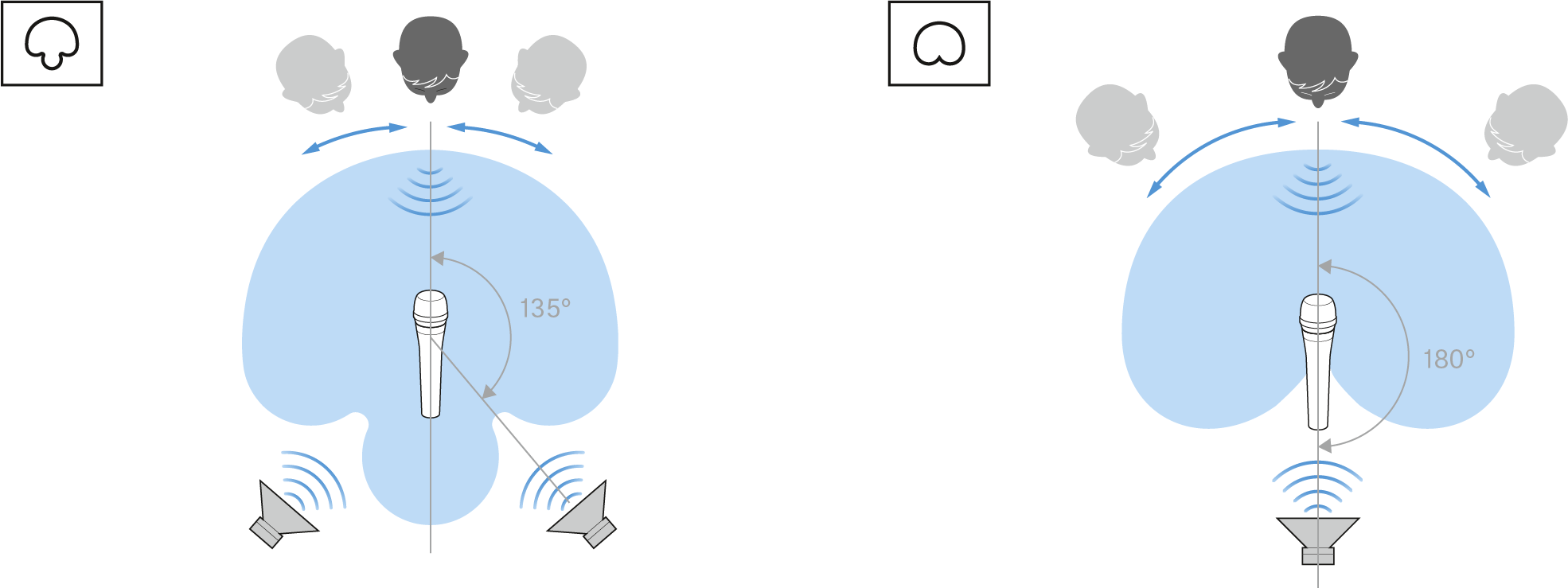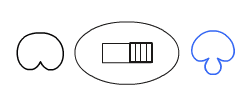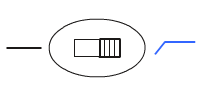Operation
Holding the microphone
If you cover the microphone head during transmission, this will change the pick-up pattern of the microphone and consequently the sound.
-
Only hold the microphone by its body.

Positioning the microphone
-
It is vital to observe the following notes:
- Position A: Very little crosstalk from other sound sources.
- Resulting sound: High proximity effect (large bass boost), powerful, direct sound
- Position B: More crosstalk from other sound sources.
- Resulting sound: Less proximity effect (less bass boost), some room ambience, natural, balanced sound
- Position C: Higher crosstalk from other sound sources.
- Resulting sound: Very little proximity effect (minimal bass boost), more room ambience, indirect sound
- Position A: Very little crosstalk from other sound sources.
-
If sibilance occurs: Position the microphone slightly to the side and not directly in front of the mouth.

Positioning the monitor loudspeakers
-
To prevent feedback and crosstalk, postion your monitor loudspeakers in the angle area of the highest
cancellation of the microphone (cardioid: 180°; super-cardioid: 135°).

Adjusting the pick-up pattern
| NOTICE | |
|---|---|
- Unscrew the sound inlet basket.
-
Set the directivity switch to the desired position:
- Cardioid
- A cardioid pick-up pattern also picks up sound from the sides. This pattern is good for picking up several vocalists at once, e.g. a choir or ensemble.
- Super-cardioid
- A super-cardioid pickup pattern reduces pick-up from the sides. This pattern is therefore good for picking up individual an individual sound source in a noisy environment. Crosstalk from other instruments on stage is drastically reduced.

- Cardioid
Adjusting the attenuation
| NOTICE | |
|---|---|
- Unscrew the sound inlet basket.
-
Set the pad switch to the desired position:
- 0 dB
- No attenuation
- -10 dB
- Reduces the sensitivity of the microphone capsule by 10 dB
- Increases the maximum sound pressure level

- 0 dB
Adjusting the low-cut/roll-off filter
| NOTICE | |
|---|---|
- Unscrew the sound inlet basket.
-
Set the low-cut/roll-off switch to the desired position:

- Off, linear frequency response

- Eliminates low-frequency noise such as impact sound, fan noise, etc.

